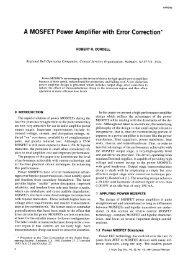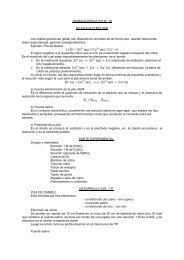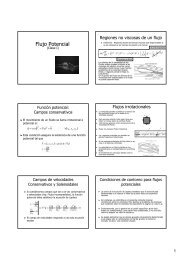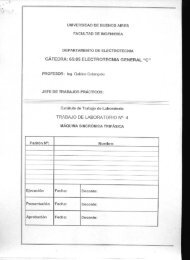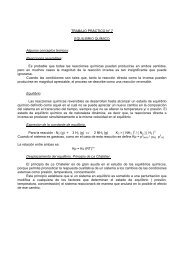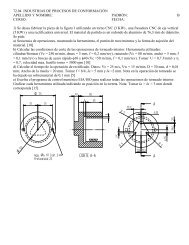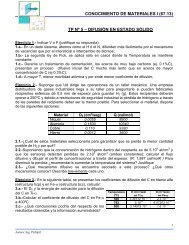Download PDF
Download PDF
Download PDF
You also want an ePaper? Increase the reach of your titles
YUMPU automatically turns print PDFs into web optimized ePapers that Google loves.
EMF and health<br />
having HCC or LCC) (197). The second<br />
study also found no increased risk of low birth<br />
weight or premature delivery in relation to<br />
high residential EMF exposure (196).<br />
Meanwhile, birth defects were the outcome of<br />
interest in a study conducted in southwestern<br />
France to explore whether women living<br />
within 100 m of high-voltage power lines at<br />
the time of birth had children at increased risk<br />
of congenital anomalies (198). There was no<br />
such increase, though too few patients lived<br />
within 25 m of the power lines (i.e., actually<br />
experienced increased EMF exposure) to test<br />
the association properly.<br />
Wertheimer and Leeper (193) first<br />
raised the possibility of a more specific association<br />
between maternal use of electrically<br />
heated beds and adverse pregnancy outcome.<br />
These investigators examined seasonal<br />
patterns of fetal growth and abortion<br />
among users of heated beds in Denver and<br />
reported that more abortions and more<br />
babies of low birth weight were conceived<br />
in winter than in summer months. The<br />
effects of heat could not be disentangled<br />
from those of EMFs however. Subsequently<br />
they showed a similar correlation between<br />
seasonality of spontaneous abortions occurring<br />
within a year prior to conception of a<br />
liveborn infant and exposure to ceiling cable<br />
heat (199). The data have been criticized<br />
because of biased ascertainment of births<br />
and abortions and because the rate of congenital<br />
malformations in the unexposed<br />
group was abnormally low (200).<br />
Subsequently, four case–control studies<br />
examining the effects of electrically heated<br />
beds have been reported. No association was<br />
seen between recalled periconceptual electric<br />
blanket or heated waterbed use and neural<br />
tube and oral cleft defects identified in the<br />
New York State Congenital Malformations<br />
Registry (201). In a study of similar design,<br />
cases of congenital urinary tract anomalies<br />
without chromosomal abnormalities were<br />
identified through the Washington Birth<br />
Defects Registry and risk was calculated in<br />
relation to prenatal use of electric blankets<br />
and heated waterbeds. No increase in risk<br />
was seen among all cases and controls, but an<br />
increase was seen in the subgroup of women<br />
with infertility. Low response rates among<br />
cases and controls and the small number of<br />
exposed cases (five) in a subgroup analysis,<br />
detract from the reliability of these data<br />
(202). More recently, two case–control data<br />
sets have been analyzed to assess risk of<br />
neural tube defects and orofacial clefts in<br />
relation to periconceptual use of electric<br />
blankets, bed warmers, and heated waterbeds<br />
(203). A study based on medical records<br />
including autopsy and ultrasonography<br />
reports in clinics in various California urban<br />
areas found no clear evidence of increased<br />
risk of defects in relation to high frequency<br />
or duration of use of electrically heated beds.<br />
Two prospective studies have also been<br />
conducted. In one the use of electrically<br />
heated beds by nearly 3,000 women receiving<br />
care at centers in the New Haven area was<br />
monitored. Time-weighted EMF exposure<br />
from beds was calculated based on bedtype–specific<br />
measurements multiplied by<br />
nightly hours of use reported at prenatal interview.<br />
No association was found between low<br />
birth weight or intrauterine growth rate and<br />
electrically heated bed use (204). Although<br />
electric blanket use at conception was weakly<br />
associated with spontaneous abortion, corresponding<br />
use of heated waterbeds was not. No<br />
measures of dose–response were associated<br />
with increased risk of abortion. The other<br />
study, of over 5,000 pregnant women, found<br />
that users of electric bed heaters had lower<br />
rates of spontaneous abortion than nonusers,<br />
and no increase in risk with increasing intensity<br />
of use was seen (205).<br />
Occupational exposure. Studies of reproductive<br />
outcomes in relation to maternal<br />
occupational exposure to magnetic fields have<br />
mostly investigated pregnant women working<br />
with VDTs. Magnetic fields experienced by<br />
operators of most VDTs (and certainly modern<br />
VDTs are not materially higher than<br />
those experienced in the general environment<br />
(207–210), however. Thus the hypothesis<br />
that increased risk of reproductive outcomes<br />
is related to increased EMF exposure logically<br />
cannot be tested in studies where VDTs are<br />
the sources of EMF exposure. Moreover, in<br />
studies to date, possible confounding factors<br />
such as stress and other work-related factors<br />
have largely gone unaddressed (192,208).<br />
These problems notwithstanding, magnetic<br />
field exposure of VDT operators has largely<br />
been estimated by assessing time spent working<br />
at the terminal (208), and more than a<br />
dozen studies have addressed the question of<br />
the possible harm to pregnant women from<br />
VDT use (192,194,207,208,211,212), with<br />
no consistent evidence of an effect. Of these a<br />
minority of studies have measured magnetic<br />
fields emitted by VDTs directly, such as two<br />
large studies conducted in the United States<br />
and Finland, respectively (206,210). In the<br />
first (206,213), telephone operators who used<br />
VDTs in the first trimester of pregnancy had<br />
no excess risks of spontaneous abortions<br />
(206), low birth weight, or premature delivery<br />
(213). In the second, women employed as<br />
clerks in Finland in the period 1975–1985<br />
who were selected from a national pregnancy<br />
database showed no overall increase in spontaneous<br />
abortions in relation to use of VDTs,<br />
though in a very highly exposed subgroup (20<br />
exposed cases), a 3-fold increase in risk was<br />
seen after adjusting for ergonomic factors and<br />
mental stress. The possibility of recall bias,<br />
both of VDT use and mental stress, exists in<br />
this study; and response rate among cases and<br />
controls was relatively poor. Further, only<br />
5–10% of VDT users in this study and no<br />
users in the previous study (206) were in the<br />
highest exposure category.<br />
A few studies have investigated the reproductive<br />
health of groups besides VDT operators<br />
who have been occupationally exposed to<br />
EMFs. The increase in congenital malformations<br />
observed in the offspring of some 370<br />
married men employed by a Swedish power<br />
company (214), was not observed in more<br />
recent studies (215), suggesting that the former<br />
may have been a chance result.<br />
Moreover, no plausible biological explanation<br />
for paternal transmission of risk is known<br />
(192,216). Similarly, little support has been<br />
found for the theories that either fertility of<br />
exposed workers (208,217) or the sex ratio of<br />
their offspring (192,218) are perturbed by<br />
exposure to low-level ELF magnetic fields.<br />
Conclusion. Until the recent cohort<br />
studies of pregnancy outcome following residential<br />
and electric blanket EMF exposure<br />
(197,204,205), little evidence has been available<br />
on the effect of EMF exposure on overall<br />
reproductive health (204,219). Investigations<br />
addressing the diversity of reproductive outcomes<br />
are notoriously difficult, with assessment<br />
of spontaneous abortions being<br />
particularly so (216). Not only has the accuracy<br />
of pregnancy outcome assessment been<br />
questionable in many studies, but also exposure<br />
measurement has been of variable value<br />
and this is especially true of the vast majority<br />
of studies addressing reproductive health in<br />
relation to VDT use, which offer little information<br />
on EMF exposure.<br />
Although there may be some relations<br />
among reproductive outcomes either through<br />
shared determinants or because one event<br />
precludes the occurrence of another (e.g.,<br />
infertility and spontaneous abortion), the<br />
most realistic and promising strategy is to<br />
focus on specific, narrowly defined reproductive<br />
outcomes. When relevant studies are subdivided<br />
in that way, only spontaneous<br />
abortion has been examined in several studies<br />
of reasonable quality, and the evidence from<br />
those studies cumulatively suggests no association<br />
with EMF exposure is present.<br />
Thus fundamental methodologic limitations<br />
preclude firm conclusions about reproductive<br />
outcomes. Studies with refined<br />
measurements of exposure and outcome<br />
could yield different results than those<br />
reported to date. However, on the basis of<br />
theoretical considerations and both experimental<br />
and epidemiologic studies (43,103),<br />
there is very little encouragement for pursuing<br />
research on EMF and reproductive<br />
health. Existing evidence does not support<br />
the hypothesis that maternal exposure to<br />
Environmental Health Perspectives • VOLUME 109 | SUPPLEMENT 6 | December 2001 929



